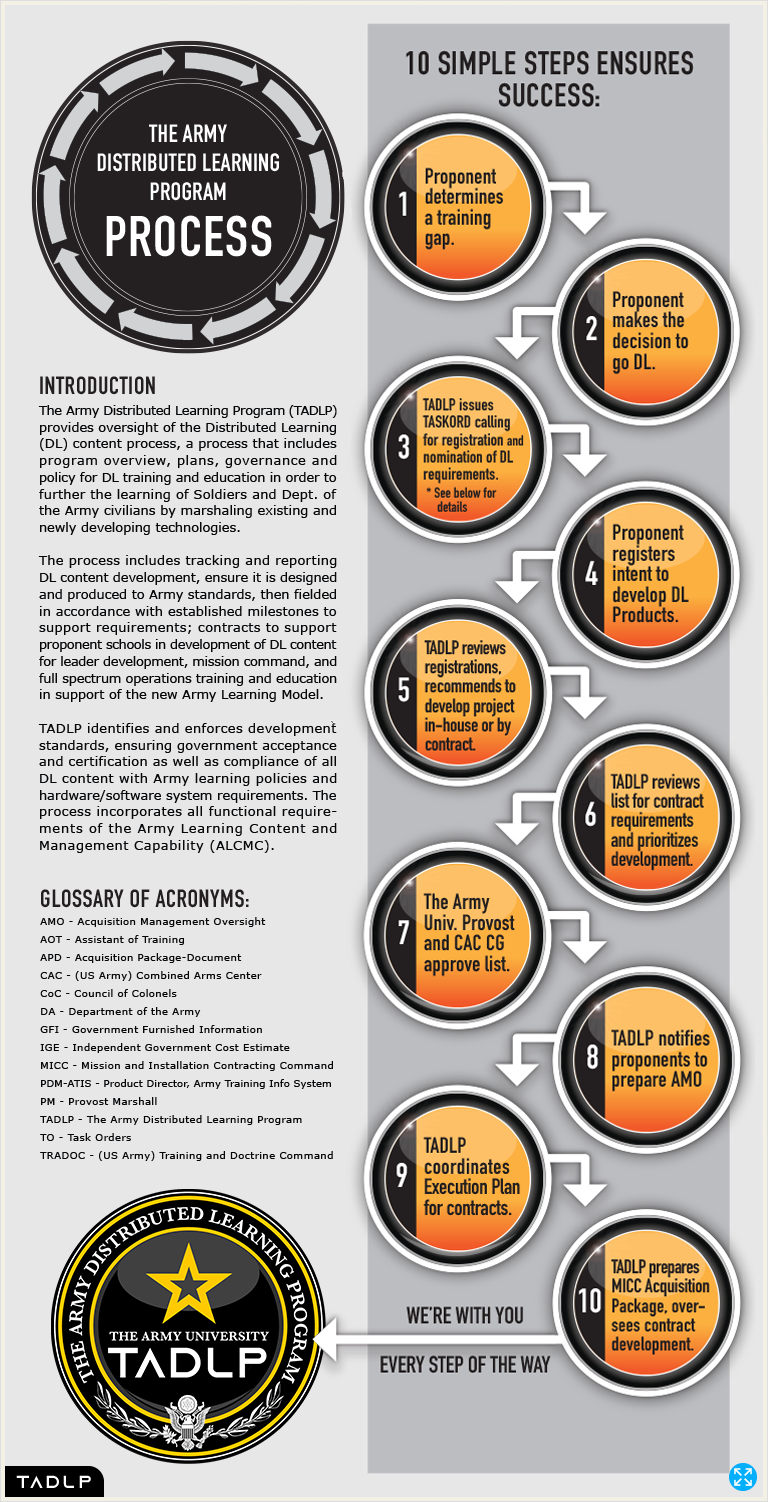
DL decision criteria

Although once considered to be the fastest and less expensive alternative to classroom training, recent lessons learned have proven otherwise. The use of complex interactivity, media, gaming, and simulations in Distributed Learning (DL) can lead to increased costs and development time. Consideration of the following criteria will help you to decide if DL is the right learning solution you require:
Q: Is the content stable?
A: If the answer is “No” then DL
may not be the right choice. If the content is subject to frequent
changes, consider building your course on a Life Cycle Management System
(LCMS), such as the Lifelong Learning Center (LLC) where content can be
updated by the course manager. Contracted DL may require more time than
other options.
Q: Does the content require a sense of taste, smell, or touch?
A: Taste, smell, and touch are still not features of Army DL.
Generally speaking, if training requires any one of these three senses, DL
is likely not the best choice.
Q: Does the content require an instructor to lead or facilitate the
course?
A: Research shows that instructor's contact is the most important
factor contributing to DL student success. Contact must be regular, on
scheduled activities and substantive (have real purpose or objectives).
Q: Does the content require the learner to interact with other learners
?
A: If the answer is “Yes”, consider a blended approach or delivery
via Lifelong Learning Center where students can interact via social media
tools or within course-threaded discuss- ions. Student interactions enrich
the content by sharing backgrounds and experiences.
Q: Does the assessment require a proctor or in-person monitoring?
A:Web based assessments can be secured using password and login or
Common Access Card (CAC) authentication to access exams. Although not 100
percent secure, they are considered to be trustworthy as long as the
information isn’t shared by the students. If an onsite proctor is needed
then DL may not be the best choice. Consider sending students to an
education center for proctored exams. There are some applications that can
be used in the LLC that secure the assessments and should be considered in
this decision.
Useful Links
the distributed learning (DL) content process
The Army Distributed Learning Program provides oversight of the Distributed Learning (DL) content process. This process includes program overview, governance, plans, and policy for DL and training/education support to enhance learning of agile Soldiers and Army civilians by exploiting current and new technologies.
Distributed Learning Content Process
